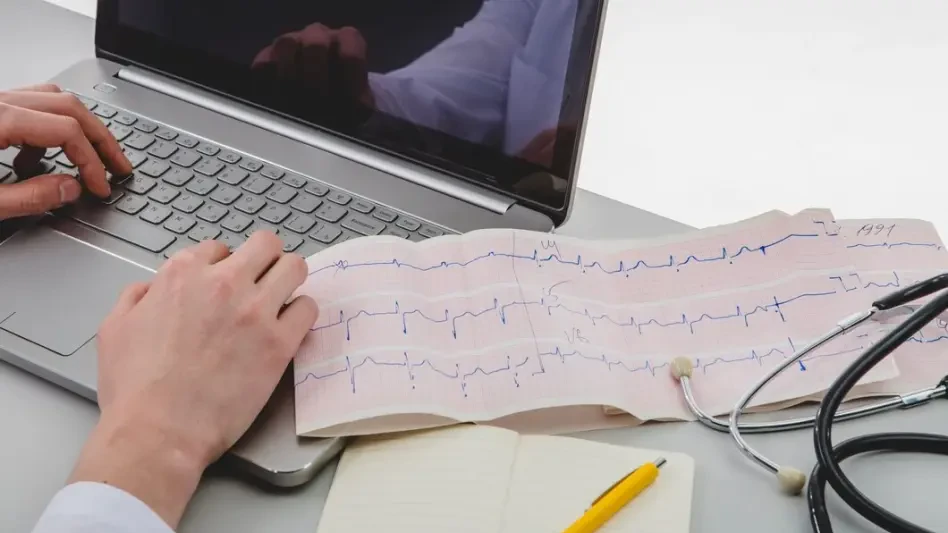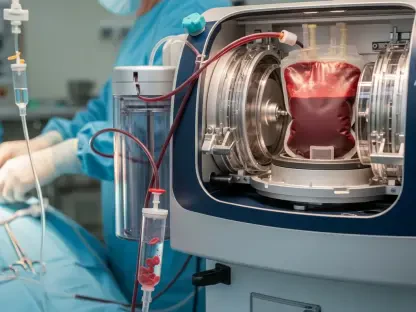The Current Landscape of Epilepsy Diagnosis and Management
Epilepsy affects millions globally, with diagnosis and management often presenting significant hurdles for both patients and healthcare systems. A staggering number of individuals face delayed or inaccurate diagnoses due to the unpredictable nature of seizures, which can vary widely in frequency and presentation. Traditional methods, while foundational, struggle to capture the full scope of this neurological condition, leaving a critical gap in effective care delivery.
Current diagnostic approaches primarily rely on short-term electroencephalograms (EEGs), typically lasting just 30 minutes, alongside patient-maintained seizure diaries. These tools, though accessible, often fail to detect infrequent or subtle seizures, and self-reporting can be unreliable due to memory lapses or unawareness during events. Inpatient video-EEG monitoring in Epilepsy Monitoring Units (EMUs) offers a more detailed assessment but is constrained by limited availability—some regions have only a handful of beds—and requires lengthy hospital stays, adding to patient burden and system strain.
The limitations of these methods underscore an urgent need for innovative solutions that extend diagnostic windows and improve accuracy. Access to EMUs remains a bottleneck, particularly in areas with scarce resources, while short-term monitoring misses critical data on nocturnal or rare seizures. Long-term monitoring technologies are emerging as a promising avenue to bridge these gaps, offering the potential to transform epilepsy care by providing continuous, real-world insights into brain activity.
Breakthroughs in Long-Term Subcutaneous EEG Technology
Emerging Innovations and Their Impact
A significant stride in epilepsy care comes from the development of the UNEEG EpiSight subcutaneous EEG (sqEEG) system, a cutting-edge tool designed for extended brain monitoring. This implantable device, capable of recording brain activity for up to 36 months, marks a departure from conventional approaches by enabling continuous data collection outside hospital settings. Its ability to transmit information remotely to clinicians ensures that patients can maintain daily routines while under observation.
Key features of this technology include its focus on real-world applicability, capturing data during sleep and other vulnerable periods when seizures might go undetected. It addresses longstanding challenges, such as distinguishing between epileptic and non-epileptic events, by providing a comprehensive dataset over extended timelines. International clinical trials, co-led by FutureNeuro and RCSI University of Medicine and Health Sciences, are currently validating this innovation across multiple European sites, highlighting its potential to redefine diagnostic standards.
The impact of such advancements cannot be overstated, particularly in detecting patterns that evade shorter monitoring periods. Nocturnal seizures, often missed by traditional EEGs, can now be identified with greater precision, enabling clinicians to tailor interventions more effectively. This technology positions itself as a complementary asset within epilepsy services, reducing dependency on resource-intensive hospital-based assessments.
Clinical Evidence and Growth Potential
Substantial evidence supports the efficacy of sqEEG systems, with prior studies published in Epilepsia demonstrating remarkable results. Research has shown high seizure detection rates, with the technology identifying all recorded events and nearly 90% of significant brain abnormalities in patients with drug-resistant epilepsy. These findings rival the detail previously achievable only through prolonged EMU stays, signaling a shift toward more accessible and accurate diagnostics.
Ongoing trials aim to build on this foundation by enhancing diagnostic precision and minimizing hospital reliance. Objectives include evaluating how continuous data can inform personalized treatment plans, potentially reducing the trial-and-error approach common in epilepsy management. Early implications suggest that such detailed monitoring could pave the way for precision medicine, allowing therapies to be customized based on individual seizure profiles.
Looking ahead, the potential for widespread adoption of sqEEG technology hinges on trial outcomes over the coming years. If successful, this innovation could integrate into standard care protocols, reshaping how epilepsy is managed globally. The focus on outpatient monitoring also aligns with broader healthcare goals of improving efficiency and patient outcomes, setting the stage for significant growth in this field.
Challenges in Implementing Long-Term EEG Monitoring
The integration of sqEEG technology into mainstream epilepsy care faces several obstacles, primarily centered around technical and logistical demands. Implantation of the device requires specialized training for neurosurgeons, while interpreting the vast amounts of data generated necessitates advanced skills among clinicians. These requirements could slow adoption in regions lacking adequate expertise or infrastructure.
Patient concerns also pose a barrier, as the invasiveness of the implantation procedure, though minimally invasive, may deter some individuals. Long-term device management, including maintenance and potential complications, adds another layer of hesitation for both patients and providers. Addressing these apprehensions through clear communication and robust support systems will be essential to building trust in this technology.
Systemic challenges further complicate implementation, with disparities in healthcare resources limiting access to advanced tools in underserved areas. Overcoming these hurdles demands strategic planning, including clinician education programs to build capacity, patient support initiatives to ensure comfort with the technology, and scalable policies to promote equitable distribution. Collaboration between stakeholders will be critical to navigating these barriers effectively.
Regulatory and Ethical Considerations in Epilepsy Technology
Navigating the regulatory landscape is a pivotal aspect of bringing sqEEG systems to market, particularly in Europe where stringent standards govern medical devices. Compliance with clinical trial protocols and device approval processes ensures that innovations meet rigorous safety and efficacy benchmarks. These frameworks, while protective, can influence the speed at which new technologies reach patients.
Ethical considerations also play a central role in the deployment of long-term monitoring solutions. Informed consent is paramount, ensuring that patients fully understand the implications of continuous brain activity tracking over extended periods. Balancing the drive for innovation with potential risks requires careful deliberation to protect patient autonomy and data privacy in an era of increasing digital health interventions.
The interplay between regulation and ethics shapes the pace of technology integration into clinical practice. Delays in approval processes or unresolved ethical debates could hinder timely access to transformative tools. Conversely, streamlined guidelines and transparent consent mechanisms can accelerate adoption, ensuring that benefits are realized without compromising safety or trust.
The Future of Epilepsy Care with Long-Term Monitoring
Sustained brain activity monitoring holds the promise of fundamentally altering epilepsy management by providing unprecedented insights into seizure dynamics. This approach could shift the paradigm from reactive to proactive care, enabling clinicians to anticipate and mitigate seizure risks before they escalate. Such a transformation would mark a significant leap toward personalized healthcare delivery.
Emerging trends, including the integration of artificial intelligence, are poised to enhance the utility of long-term EEG data. AI-driven analytics could enable real-time seizure prediction and pattern recognition, offering a level of precision that manual interpretation cannot match. These advancements, if harnessed effectively, may further reduce diagnostic delays and improve therapeutic outcomes for patients.
On a broader scale, patient-centered innovations stand to reshape quality of life by minimizing hospital stays and alleviating the stress of prolonged waiting lists. Global economic and healthcare trends, such as increasing demand for cost-effective solutions, will likely influence the accessibility and scalability of sqEEG technology. Ensuring that these tools reach diverse populations will be a key determinant of their long-term impact on epilepsy care.
Conclusion and Path Forward for Epilepsy Innovation
Reflecting on the journey of long-term EEG monitoring, the clinical trials and early validations of the UNEEG EpiSight system underscore a pivotal moment in epilepsy care. They highlight a clear potential to enhance diagnostic precision while alleviating pressures on healthcare infrastructures. The promise of personalized treatment plans stands as a beacon for improved patient outcomes across varied contexts.
Moving forward, stakeholders must prioritize actionable steps to sustain this momentum. Increased investment in research could accelerate refinements in sqEEG technology, while policy support might streamline regulatory pathways for faster integration into clinical settings. Patient education initiatives should also be expanded to foster acceptance and understanding of these innovative tools.
Collaboration between technology developers, healthcare providers, and advocacy groups emerges as a vital next step to address access disparities. By focusing on scalable solutions and leveraging Irish leadership in global epilepsy research, the field could usher in a new era of care. This collective effort promises to ensure that advancements in monitoring technology reach those who need them most, setting a precedent for future health innovations.









